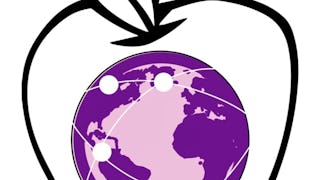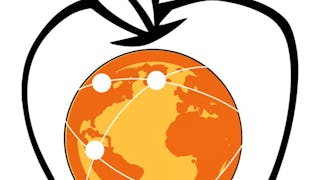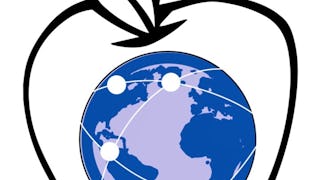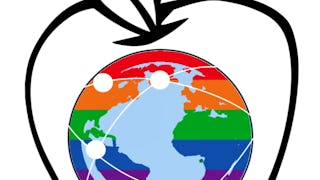In this course you’ll focus on the fundamentals of teaching the impacts of technology, starting by exploring how you interact with and benefit from technology in a typical 24 hour period, such as the desire for instant food and entertainment. This will be done through a series of paired teaching sections, exploring a specific “Impact of Computing” in your typical day and the “Technologies and Computing Concepts” that enable that impact, all at a K12-appropriate level.



Teaching Impacts of Technology: Fundamentals
This course is part of Teaching Impacts of Technology in K-12 Education Specialization

Instructor: Beth Simon
7,000 already enrolled
Included with
(38 reviews)
Skills you'll gain
Details to know

Add to your LinkedIn profile
5 assignments
See how employees at top companies are mastering in-demand skills

Build your subject-matter expertise
- Learn new concepts from industry experts
- Gain a foundational understanding of a subject or tool
- Develop job-relevant skills with hands-on projects
- Earn a shareable career certificate

There are 5 modules in this course
Welcome! Are you interested in teaching about the impacts of the technology you use everyday? To learn more about the computation and computing concepts that underlie those technologies? We'll be using a problem-based approach to explore interesting ways to teach concepts of networks and the internet, data and analysis, and even algorithms and data representation. Finally, we'll evaluate, critique and improve/personalize an "unplugged activity" where students learn how to create the minimal network needed to provide connectivity amongst a set of houses. This activity can be scaled for use in grade levels from 4th grade to 12th grade.
What's included
2 videos3 readings1 assignment1 discussion prompt
How do you interact with and benefit from technology in a 24 hour period? We'll ask you to track your technology use and reflect on its costs and benefits to you. We'll also start by looking at a problem many people might have in a given 24 hour period -- being hungry and wanting someone to bring them some food! We'll explore several smartphone apps related to this including doordash, yelp, and lyft.
What's included
12 videos9 readings1 assignment3 app items4 discussion prompts
Streaming media has had huge impacts not only on consumer choice, but on who is enabled to produce digital media -- be it entertainment or education. Then we'll look at some of the limitations and possible new advances in this area.
What's included
5 videos7 readings2 assignments3 app items4 discussion prompts
This week our work falls into 2 categories. The impacts computing has had on our lives so far may not be the entire story. The CSTA K-12 standards focus a lot on having students not only look at the past, but consider impacts of future advances. Second, we reflect on core constructivist learning theory -- but with a specific focus on teaching computing concepts.
What's included
6 videos4 readings1 assignment3 discussion prompts
We'll evaluate a "CS Unplugged" lesson plan that supports students in learning how to represent real world map/travel representations in a graph. This lesson plan extends upon the "Paving a Muddy City" online simulator you used earlier in the course. We'll walk through a revised lesson plan and ask you to help improve it by added vocabulary and assessment items. You'll be able to contribute to and access a crowdsources set of resources created by other learners in this class!
What's included
4 videos1 reading1 app item
Earn a career certificate
Add this credential to your LinkedIn profile, resume, or CV. Share it on social media and in your performance review.
Instructor

Offered by
Explore more from Education

University of California San Diego

University of California San Diego

University of California San Diego

University of California San Diego
Why people choose Coursera for their career




Learner reviews
38 reviews
- 5 stars
89.47%
- 4 stars
7.89%
- 3 stars
2.63%
- 2 stars
0%
- 1 star
0%
Showing 3 of 38
Reviewed on Oct 31, 2020
Wonderful to end this specialization with this course.
Reviewed on Nov 13, 2018
Loved very lesson! Completely looking forward to Course 2.
Reviewed on Jan 26, 2021
I learned so many things and its just the first course!! Imagine what I can learn in 6 courses for my specialization 💗

Open new doors with Coursera Plus
Unlimited access to 10,000+ world-class courses, hands-on projects, and job-ready certificate programs - all included in your subscription
Advance your career with an online degree
Earn a degree from world-class universities - 100% online
Join over 3,400 global companies that choose Coursera for Business
Upskill your employees to excel in the digital economy
Frequently asked questions
In this course you’ll focus exploring how you interact with and benefit from technology in a typical 24 hour period and explore the underlying technical concepts that make this possible. After successfully completing this course you will be able to:
[1] Reflect on an increased observation of the technology around you
[2] Describe at least 2 problem-solution sets of challenges that we humans face and explain the technology that responds to them, including geolocation, getting directions (graph representations and paths), crowdsourcing, near field communication, downloading vs streaming, analog vs. digital image representation, Internet performance metrics, and compression algorithms
[3] Enact pedagogical knowledge in computer science-specific contexts, enabling you to employ constructivist activities useful in teaching impacts of computing, evaluate and contribute to an unplugged computer science lesson plan on graphs
Yes! This course is designed as component of a Specialization that is 1 of a set of 4 Specializations (all will be offered on Coursera) that will support the requirements of the California Supplementary Authorization. Additionally, the Specialization may support credentialing or authorization in other states. However, most states require a transcript from an accredited institution of higher education. See the FAQ question on “Will I earn university credit” to find out how to get such a transcript.
Yes, you can earn UCSD credit for completing this course, but only by completing the full Teaching Impacts of Technology in K-12 Education Specialization. In addition, you will need to (1) Enroll in an additional UCSD Extension course before completing the capstone ($500) and (2), complete part of the capstone project via an online proctoring service. After this is done, your Specialization course grades will be accumulated and a transcript with your final grade (both letter grade or pass-only supported) will be issued from UCSD with 4 graduate-level units. These are eligible to count towards the California Supplementary Authorization.
More questions
Financial aid available,

